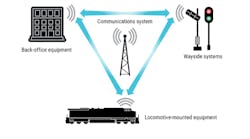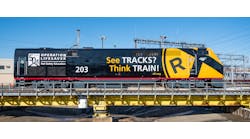Wabtec Corporation’s Trip Optimizer™ system has surpassed more than 500 million auto miles as railroads utilize the energy management system to operate their trains, which also helps reduce emissions and fuel costs.
“Fuel is the second largest operating cost for our customers, with North American Class 1 railroads spending more than $7 billion on diesel each year,” said Peter Thomas, Wabtec’s chief commercial officer for Digital Electronics. “The Trip Optimizer system has demonstrated its value by improving locomotive efficiency and utilization for more than 500 million miles of automatic operation. It is EPA certified to cut emissions by 10 percent by reducing fuel consumption enabling railroads to shrink their carbon footprint and reduce operating expenses.”
Wabtec says the Trip Optimizer system is installed on more than 11,000 locomotives globally and has saved 400 million gallons of fuel to date. The system also is reducing CO2 emissions by more than 500,000 tons per year, equivalent to taking 100,000 cars off the road.
“We continue to explore ways to enhance the benefits of the Trip Optimizer system to the environment and our customers by providing advanced features,” said Scott Horning, Wabtec’s vice president for train performance and automation solutions. “The SmartHPT feature provides an additional five percent fuel savings by optimizing train performance for a given horsepower per trailing tonnage of the train. While integration with our LOCOTROL distributed power system provides automatic control of Distributed Power trains in independent mode delivering improved train handling over challenging terrain.”
Wabtec launched the Trip Optimizer system in 2009. It is a smart cruise control system for trains. The system has situational awareness that accounts for terrain, train make-up and speed restrictions to calculate an optimum speed plan. It automatically controls locomotive throttle and dynamic brakes according to that plan for optimal fuel utilization and emission reduction.

